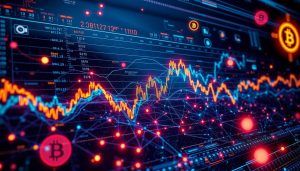In today’s rapidly changing economic landscape, understanding inflation is more crucial than ever. As prices soar and purchasing power dwindles, I’ve found myself diving deep into the concept of “truflation.” This term represents a more transparent and accurate way to gauge inflation in real-time, addressing the limitations of traditional measures.
Truflation leverages blockchain technology and data analytics to provide a clearer picture of price changes across various sectors. It’s not just a buzzword; it’s a tool that can empower consumers and businesses alike. By exploring truflation, I aim to shed light on how it can reshape our understanding of economic trends and help us navigate financial decisions more effectively.
What Is Truflation?
Truflation offers a new perspective on measuring inflation by leveraging cutting-edge technology. This innovative approach enhances transparency and accuracy in tracking price changes in real time.
Definition and Overview
Truflation defines a method of monitoring inflation that utilizes blockchain technology and real-time data analytics. Unlike traditional inflation metrics, truflation captures more granular data from various sectors, allowing for a precise understanding of price fluctuations. This methodology delivers a more dynamic view of economic conditions, empowering consumers and businesses alike.
How Truflation Works
Truflation operates by aggregating and analyzing data from multiple sources. It employs smart contracts on a blockchain, ensuring data integrity and reliability. By tracking real-time price changes across different sectors—such as food, housing, and transportation—the system provides an accurate inflation index. Users interact with the platform through accessible interfaces, allowing them to see current inflation rates and trends instantly. Therefore, the reliance on outdated statistical methods diminishes, offering a more immediate picture of economic landscapes.
The Importance of Truflation
Truflation plays a critical role in enhancing our understanding of economic conditions through accurate and real-time data. This innovative framework not only sharpens policy response but also empowers individuals and businesses with precise inflation metrics.
Impacts on Economic Indicators
Truflation affects key economic indicators by providing real-time adjustments that reflect current market conditions. Metrics like Consumer Price Index (CPI) and Gross Domestic Product (GDP) benefit from this immediate feedback loop. By using decentralized data sources, truflation reduces delays in reporting, allowing for timely insights on people’s purchasing power and cost of living. Quick access to price alterations can influence decision-making for consumers and businesses alike, affecting spending behaviors and investment strategies.
Comparison with Traditional Inflation Measures
Truflation differs significantly from traditional inflation measures. Traditional metrics often rely on historical data and predetermined baskets of goods, leading to delayed and sometimes misleading outcomes. In contrast, truflation uses advanced blockchain technology and dynamic real-time data to reflect actual market conditions. This results in more granular and precise insights into inflation rates, making it a superior tool for economists and policymakers. For instance, while a standard inflation report may take weeks to compile, truflation provides updates almost instantaneously, ensuring relevance and accuracy in today’s fast-paced economy.
Benefits of Using Truflation
Truflation offers numerous advantages by leveraging blockchain technology and real-time data analytics. These benefits facilitate better economic understanding and support more informed decision-making.
Real-Time Data Insights
Real-time data insights generate accurate inflation metrics through constant tracking of price changes across various sectors. This immediacy allows for rapid identification of economic trends and shifts, making it possible to respond quickly to emerging issues. Users access timely information that reflects current market conditions, enhancing their understanding of purchasing power and inflation fluctuations. The aggregation of data from multiple sources ensures comprehensive insights, reducing the lag commonly associated with traditional inflation measurements.
Enhanced Decision-Making for Businesses
Enhanced decision-making for businesses stems from the precise data provided by truflation. Companies can adjust pricing strategies based on up-to-date inflation data, optimizing their revenue management. With clear visibility into inflation trends, businesses adapt their operational processes, supply chain management, and investment strategies, ensuring better resource allocation. Informed decisions lead to improved financial outcomes, as organizations can navigate market conditions with agility, making more strategic choices in an increasingly volatile economy.
Limitations and Criticisms of Truflation
Despite its advantages, truflation faces limitations and criticisms that address data accuracy and adoption challenges. Understanding these issues is crucial for fully evaluating truflation’s potential impact.
Data Accuracy Concerns
Data accuracy remains a significant concern regarding truflation. Aggregating information from diverse sources may introduce inconsistencies. Inaccurate or outdated data can skew inflation assessments, leading to misguided policy decisions. Additionally, verifying the reliability of decentralized data inputs presents challenges, particularly when third-party data providers are involved. The blockchain’s transparency does not automatically equate to data accuracy, making thorough validation essential.
Challenges in Adoption
Adopting truflation poses various challenges. Traditional economic frameworks are deeply ingrained within governmental and institutional processes. Resistance to change stems from established practices and the perceived risks associated with integrating new technologies. Furthermore, insufficient technical infrastructure in certain regions may hinder the implementation of truflation systems. Education about truflation’s benefits and functionality is vital for widespread acceptance among stakeholders.
Future of Truflation
Truflation presents exciting prospects for measuring inflation and enhancing economic analysis. I see its evolution leading to significant advancements in how we interpret economic data.
Potential Developments
Truflation could see various developments aimed at improving accuracy and usability. Enhanced data sourcing methods could emerge, allowing for more reliable input from decentralized platforms. Innovations like predictive analytics may offer foresight into inflation trends, enabling proactive decision-making for economists and businesses. Collaboration with financial institutions might establish standardization, improving credibility and trust in truflation data.
Integration with Digital Economics
Truflation’s integration with digital economics stands to revolutionize financial interactions. It might establish new metrics for evaluating economic health, directly tying inflation rates to digital assets. As cryptocurrencies and blockchain technology become integral to commerce, truflation’s ability to provide real-time data can help businesses adjust strategies, pricing, and investments. My hope is that stakeholders in the digital marketplace embrace truflation, enhancing transparency and responsiveness in economic performance assessments.
Conclusion
Truflation represents a significant shift in how we understand and measure inflation. Its reliance on blockchain technology and real-time data brings a level of transparency and accuracy previously unseen. As I explore the future of truflation, I see immense potential for improved economic insights that can directly impact our daily lives.
The challenges it faces won’t be easy to overcome but the benefits could be transformative. By fostering collaboration with financial institutions and enhancing data sourcing, truflation could redefine economic metrics. Embracing this innovation could lead to smarter financial strategies and better-informed decisions for individuals and businesses alike. The journey ahead is promising and I’m excited to see where truflation takes us.























 Bitcoin
Bitcoin  Ethereum
Ethereum  Tether
Tether  XRP
XRP  USDC
USDC  Wrapped SOL
Wrapped SOL  Lido Staked Ether
Lido Staked Ether  TRON
TRON  Dogecoin
Dogecoin  Cardano
Cardano  Figure Heloc
Figure Heloc  WhiteBIT Coin
WhiteBIT Coin  Wrapped stETH
Wrapped stETH  Bitcoin Cash
Bitcoin Cash  Wrapped Bitcoin
Wrapped Bitcoin  USDS
USDS  Chainlink
Chainlink  Wrapped eETH
Wrapped eETH  Binance Bridged USDT (BNB Smart Chain)
Binance Bridged USDT (BNB Smart Chain)  LEO Token
LEO Token  WETH
WETH  Hyperliquid
Hyperliquid  Monero
Monero  Stellar
Stellar  Zcash
Zcash  Ethena USDe
Ethena USDe  Coinbase Wrapped BTC
Coinbase Wrapped BTC  Litecoin
Litecoin  Sui
Sui  Avalanche
Avalanche  Hedera
Hedera  Shiba Inu
Shiba Inu  sUSDS
sUSDS  USDT0
USDT0  Dai
Dai  Mantle
Mantle  PayPal USD
PayPal USD  Toncoin
Toncoin  World Liberty Financial
World Liberty Financial  Cronos
Cronos  Ethena Staked USDe
Ethena Staked USDe  Uniswap
Uniswap  Polkadot
Polkadot  MemeCore
MemeCore  Aave
Aave  Bittensor
Bittensor  USD1
USD1  Rain
Rain